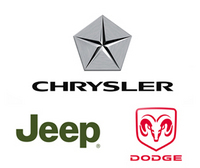The Real Story on Chrysler's Dealer Network - The Chrysler Perspective
 |
By Peter Grady, Vice President Network Development and Fleet, Chrysler Group LLC
AUBURN HILLS, MI - July 16, 2009: There’s been a lot said about why Chrysler LLC decided to trim its dealer network and how it chose those dealerships that would not go forward as part of the new Chrysler Group LLC.
 Peter Grady, Vice President Network Development and Fleet, Chrysler Group LLC |
As Congress considers legislation aimed at reversing our decisions, I feel it’s important to set the record straight—not with opinion or rhetoric, but with straight facts. Just like those paint sets we played with as kids, it’s best to do this by the numbers. So here goes.
We chose the network that we felt would best represent the new Chrysler Group LLC in each and every market. The process began with a thorough review of every market, and the realistic sales volume opportunity given the significantly reduced industry. We then chose the proper number of dealers for each market so that those dealers could realize a return on their investment, and ultimately further invest in the market and our customers.
We reduced our U.S. dealer network by 789 dealers, leaving 2,385 doing
business across the nation. Critics have complained that this move left
customers in many areas underserved. On the contrary, of the 2,385
remaining dealers:
• 1364 Chrysler, Jeep®, and Dodge dealers are located in rural areas.
• 592 Chrysler, Jeep and Dodge dealers serve the 124 largest metro areas.
• 429 Chrysler, Jeep and Dodge dealers serve the next largest population areas, or what we call secondary
markets.
On the other side of the coin, our rationale for choosing which dealerships would not be going forward with the new company has been criticized as unfair and unfounded. That accusation is rebutted in large part by a key finding by U.S. Bankruptcy Court Judge Arthur J. Gonzalez, who wrote, “The Court also finds that no evidence has been presented to the Court showing that the Debtors made their individual rejection decisions irrationally, such that the rejections demonstrate bad faith or whim or caprice.” This is no small statement. Thirteen Chrysler employees were questioned thoroughly by dealer lawyers in depositions, including Bob Nardelli, Jim Press, Steven Landry and me. Chrysler employees testified and provided statements at the hearing on the sale of assets to the new Chrysler Group and the hearing on rejected dealers. Many rejected dealers also testified and were deposed. In all, some 350,000 pages of Chrysler documents were turned over to dealer lawyers and the bankruptcy court for examination.
Together with that Court finding, the numbers make the case:
• The 789 rejected dealers achieved on average only 73 percent of their
contractual minimum sales responsibility. This resulted in 55,000 missed
vehicle sales and $1.5 billion in lost revenue to Chrysler. This represents
lost economic value to the local communities and states, as well.
• It represents $33 million in annual costs to the company to maintain the
789 discontinued dealers for everything from personnel to support ordering,
auditing, processing of payments, and other myriad of administrative services.
• It costs the company $150 million annually for marketing
and advertising for the 789 dealers—that’s above and beyond
dealer contributions.
• It would cost $1.4 billion over four years
to develop and engineer overlapping “sister” vehicles, if a
significant minority or a majority of our dealer network did not sell all
three brands under one roof.
The fact is Chrysler didn’t just jump into reducing its dealer network. The process began more than a decade ago with widespread dealer support. However, the bankruptcy reorganization made it necessary to accelerate the reduction and complete it during the court process.
If Congress reverses this process, it flies in the face of a U.S. vehicle market that has declined 40 percent since 2007. Indeed, the U.S. dealer network was built to serve a market that once sold 16 million vehicles a year. Those days are gone.
Last year, annual vehicle sales industry wide in the U.S. dropped to 13.5 million units and for 2009, that number is expected to fall to 10 million units.
There are simply too many dealers for not enough sales. When there are too many dealers in an area each dealer is less profitable and that means a reduced ability to invest in the business, risking a negative customer experience. You only get one chance at a first impression and once a customer is lost, it’s very difficult to win them back.
Too many dealers in an area drives down vehicle values due to unhealthy competition, and that can chill residual values, costing consumers money when they trade in their vehicles.
It also makes it tough to hang onto the best sales
people who might triple their income at dealerships selling other makes.
More numbers:
• 233--Average annual vehicle sales at the 789 rejected dealers
• 405—Average annual vehicle sales at
Chrysler LLC dealerships prior to the recent dealer network adjustments.
• 525—Average annual sales at U.S. dealerships
• 692—Average annual sales at Nissan dealerships
• 1,219—Average annual sales at Honda dealerships
• 1,292—Average annual sales at Toyota dealerships
Some final numbers: They relate to the 789 rejected dealerships, and
Chrysler’s efforts to provide a “soft landing” for them.
• More than 50 percent are still in business selling other
manufacturers’ new vehicles, selling and servicing used vehicles, or
operating new business ventures such as acting as a buyer’s advocate
for consumers purchasing new vehicles.
• 100—the percentage of remaining vehicle inventory redistributed as a result of Chrysler working
with major wholesale floorplan lenders. We weren’t obligated to help
out with this; we just felt it was the right thing to do.
• 590 requested assistance from Chrysler with parts distribution, with 528
(almost 90 percent) receiving commitments for redistribution.
All we ask is that Congress, dealers, journalists, and of course, our customers, take a close look at the numbers. I’m convinced they add up to a true representation of why we had to make some decisions about our dealer network that were not only necessary and tough, but, ultimately, fair.


